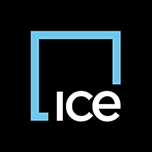MORTGAGE LOAN ORIGINATION SYSTEM: WHAT IS IT?

A Mortgage Loan Origination System (LOS) is a digital tool for managing the mortgage lending process from application submission to post-closing. An LOS serves two essential functions:
1. To manage the steps in the loan origination journey.
2. To qualify clients and direct them to loan fulfillment.
An effective LOS removes friction from the mortgage origination process and facilitates the timely progression of loans from application through post-closing. This article examines the characteristics of an effective LOS by using avatars Lisa and Frank, who are buying a new home, to illustrate the different steps in the process.
What Does an LOS do?
Let’s follow Lisa and Frank through their homebuying journey to see an LOS in action.
Step 1: Application
Lisa and Frank apply for a mortgage online. They enter the LOS through a portal known as a Point-of-Sale or (POS). Lisa and Frank complete the form to the best of their ability and submit it through the portal. The LOS reviews the application and analyzes it for completeness. As is often the case, the homebuyers left a few important fields blank. The LOS sends an automatic notification to a loan officer, who helps Lisa and Frank provide the missing information.
Step 2: Prequalification
After the application is complete, the LOS checks to see whether the income, savings and credit rating Lisa and Frank reported are sufficient to warrant additional consideration for the amount they want to borrow. In this case, it is, and the application passes from the POS to another module, known as the Product and Pricing Engine (PPE). The PPE analyzes loan options and pricing currently available to borrowers with similar income, savings and credit and presents Lisa and Frank with a variety of loan options.
Lisa and Frank select their preferred loan product and terms and receive an automated prequalification letter. This letter, generated by the LOS, lets them know their purchase can proceed, if the information they provided can be confirmed and the property they are interested in passes muster as collateral. In other words, the PPE allows Lisa and Frank to quickly and easily find a loan they can afford. This is a big improvement from the days when loan officers had to meet with every prospect in person and call around to prospective lenders to prequalify a borrower. In a premier LOS, this transition from POS to PPE is seamless, allowing the process to quickly advance to the next step.
Step 3: Preapproval
Lisa and Frank are excited to have been prequalified. They sign a purchase contract and the LOS software kicks off the preapproval processes by ordering an appraisal.
Although some lenders use the terms prequalification and preapproval interchangeably, there is a difference. Prequalification relies solely on information provided in the application; preapproval involves proof that the application information provided is accurate. During preapproval, Lisa and Frank will need to provide source documents, such as bank statements and pay stubs, to prove their income. Preapproval will also require a hard credit check so their lender can get their credit score, and see how much other debt they may have.
Documents required for preapproval typically include:
• W-2s
• Pay stubs
• Bank statements
• Driver’s license
• Social Security number
Those source documents will be used for:
• Proof of income
• Employment verification
• Proof of assets
• Credit history
• Identification
• Debt-to-income (DTI) determination
Lisa and Frank upload the requested documents through the LOS portal and receive a loan estimate almost immediately. This could have taken up to 72 hours if their lender did not have an online LOS platform.
Step 4: Underwriting
With source documents and an independent property appraisal in the LOS, Lisa and Frank’s mortgage application moves on to underwriting. In an LOS, this also happens electronically once the system determines all preapproval conditions have been met.
In underwriting, a lender weighs the physical and financial risks associated with a loan using source documents provided by a borrower along with public and proprietary property data to make a final determination whether to approve or reject an application.
Underwriting is a data-intensive process. An effective LOS needs to be tightly integrated and work hand in glove with customer relationship management (CRM) tools to quickly send requests and process responses.
Note: An effective LOS should be able to connect electronically with a variety of third-party systems. For example, a lender may have specific customer relationships and reporting needs that are not covered by an LOS. Most third-party software includes a protocol, known as an application programming interface or API, to facilitate that connection.
Step 5: Doc Prep and Compliance
Once a loan has been approved, the loan agreement and government-mandated disclosures must be prepared and sent to Lisa and Frank. Accurate and timely documentation is essential, not only for a good customer experience, but also because of the hefty fines that could be assessed for failing to comply with federal and state lending laws. Again, proven LOS software can help.
Lisa and Frank’s loan estimate and closing disclosure need to match for their lender to comply with Fair Lending laws. Regulations constantly change, so your LOS should be updated regularly, and adapt to shifts in regulatory requirements.
A document management system allows an effective LOS to take documentation out of a loan officer’s briefcase and less secure workstations and place it into a protected cloud environment.
Lisa and Frank may not even be aware of how their lender’s use of a document management system protects their sensitive financial data from prying eyes. It’s something they shouldn’t and won’t have to worry about. Without a secure document management system, however, what began as a happy journey toward the dream of homeownership could quickly turn into an identity theft nightmare.
An effective LOS document management system should also be able to securely store borrower documents after closing in accordance with industry security practices. Data security requires constant diligence because there is never a guarantee against a data breach.
Step 6: Closing, Funding and Post-Closing
Now that Lisa and Frank have successfully applied for a loan, been approved and presented with all required disclosures, only one step remains before getting the keys to their new home and popping open a bottle of champagne: closing. Mortgage loan closings are an intricate ballet with numerous moving parts that must be choreographed perfectly to deliver those keys on time and leave everyone (including the regulators) with smiles on their faces.
An effective LOS provides a dashboard to let the lender see, at a glance, which tasks have been completed and where things may need a little extra focus to keep their loan production pipeline flowing smoothly.
Lisa and Frank’s loan closes on time and they share their good news and a ringing endorsement of their lender on social media. They throw a housewarming party, and share a bottle of bubbly provided by their loan officer, along with a card they display on their mantel.
To Lisa and Frank, the lender’s closing present was a thoughtful gift. But it was also the first of many thoughtful relationship-building connections they will experience as part of the 84-touch, 5-year “client for life” post-closing program built into their loan officer’s LOS.
Their loan officer knows that by keeping in touch with Lisa and Frank, he or she will be top of mind when a friend asks for a recommendation, or when they are ready to sell or refinance their home.
A good loan officer might be able to do all of this on their own, but why reinvent the wheel, or leave such an important business development process to chance?
Before we leave Lisa and Frank and wish them happiness and success in their new home, let’s review their journey.
Remember, they began by filling out a form in an online point-of-sale portal. The LOS captured that information and set the funding process in motion through customer relationship management and the product and pricing engine. The LOS helped keep the process moving with a dashboard checklist and integrations that allowed the loan officer to ensure the application was complete. The application could then be kept moving from prequalification and preapproval to underwriting, documentation, assisting compliance, closing and beyond.
Lisa and Frank had hoped for efficiency in the loan process and were not disappointed. By streamlining and automating the loan production process with effective LOS software, Lisa and Frank’s successful journey toward homeownership can be repeated with future borrowers for lenders to keep growing ROI and their loan portfolios.

